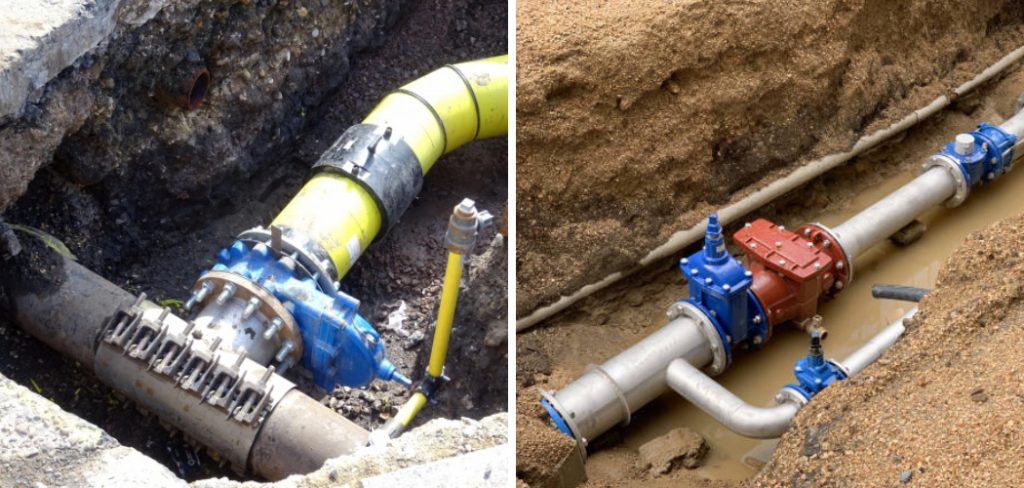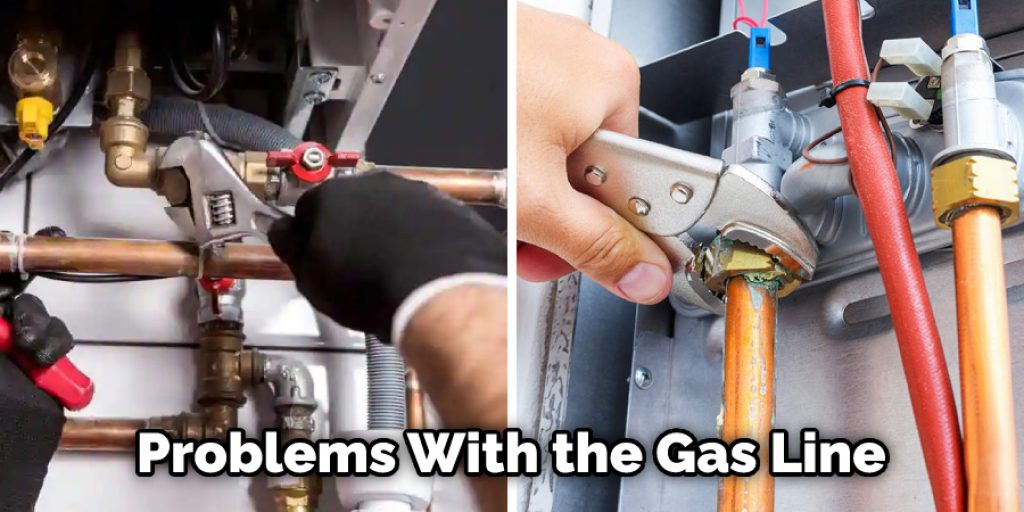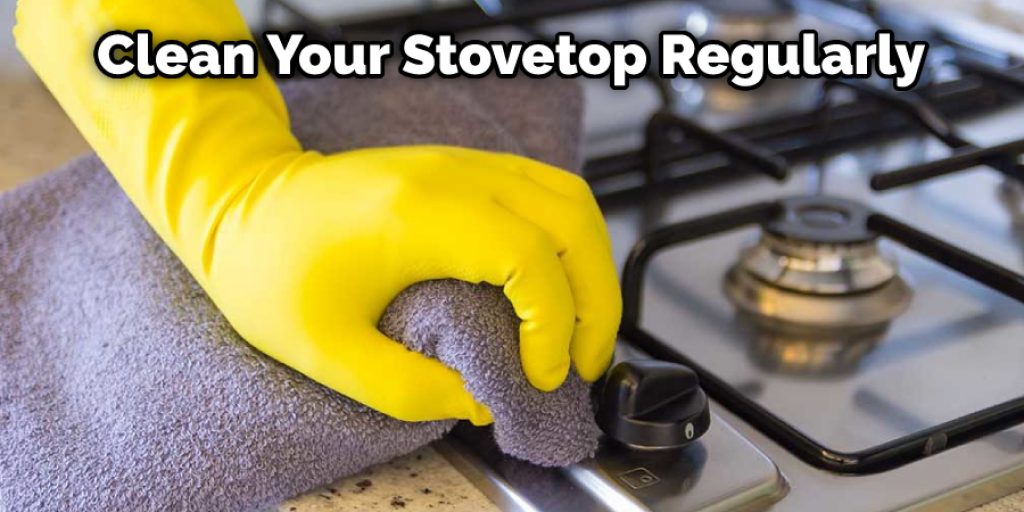Do you have a clogged gas line? If so, don’t worry; you’re not alone. Unfortunately, a clogged gas line is a common problem that many homeowners face. However, the good news is that it’s usually a fairly easy problem to fix. In this blog post, we’ll show you how to fix clogged gas line using a plunger. So read on for instructions on how to get your gas line flowing freely again!

Summary: When there is a clog in the gas line, it can be fixed by following a few simple steps. First, determine where the blockage is located and then inspect the gas line for any blockages or buildups. Once you have determined the source of the obstruction, turn off the gas and remove it carefully.
Clean out the gas line with special tools if necessary and check for other possible clogs. After ensuring everything is clear, turn on the gas again and check for leaks. If needed, you can also clear out any blockages leading to any appliances connected to your gas line.
Why It’s Important to Fix Clogged Gas Line?
A clogged gas line can cause a lot of problems. Most importantly, it can be a fire hazard. If the line is clogged, the gas can’t flow properly and can build up, causing an explosion.
Additionally, a clogged gas line can cause your appliance not to work properly or at all. Not being able to use your stove or oven can be frustrating, but it’s even more frustrating when you have to call a repairer to come to fix it – and it costs you money. You can save time and money by avoiding a clogged gas line in the first place.
The best way to do this is to have a professional service your appliance once a year, or at least when you notice something isn’t working right.
So, instead of taking the risk, it’s important to fix a clogged gas line as soon as you notice the problem.
How to Fix Clogged Gas Line Step by Step Guide
Step 1: Ensure Safety Measures
Before beginning the process of fixing a clogged gas line, ensure that you are wearing appropriate safety gear, including gloves, safety goggles, and a mask. Turn off the gas supply and any appliances connected to the gas line. Open windows and doors to ensure proper ventilation and prevent the accumulation of dangerous gas fumes.
Step 2: Locate the Clog
Start by identifying the location of the clog within the gas line. You can do this by examining the gas appliances in your home. If only one appliance is malfunctioning, the clog is likely in the line directly connected to that appliance. If multiple appliances are affected, the clog could be in a main gas line.
Step 3: Inspect Gas Line Connections
Check the connections between the gas line and the appliances for any visible damage or wear. Loose connections or damaged fittings could be causing the clog. If you find any issues, tighten the connections or replace the damaged parts.
Step 4: Prepare to Clear the Clog
Gather the necessary tools and materials for clearing the clog. You will need a gas line wrench, pipe cutter, pipe cleaner or brush, pipe joint compound, pipe thread sealant, and replacement pipe fittings, if necessary.
Step 5: Disconnect the Gas Line
Use the gas line wrench to disconnect the gas line from the appliance or main line where the clog is located. Be prepared for a small amount of residual gas to escape when disconnecting the line.
Step 6: Inspect the Disconnected Line
Look inside the disconnected gas line for any visible debris or blockages. Use a flashlight if necessary to get a better view. If you can see the clog, proceed to Step 7. If the clog is not visible, you may need to disassemble more sections of the gas line to locate it.
Step 7: Remove the Clog
Use the pipe cutter to cut away the section of the gas line containing the clog. If the clog is visible and accessible, you can use a pipe cleaner or brush to remove the debris. Be sure to clean the entire length of the pipe thoroughly to ensure all debris is removed.
Step 8: Reassemble the Gas Line
After removing the clog, reassemble the gas line using the pipe joint compound and pipe thread sealant to create a tight seal. Replace any damaged pipe fittings or sections of the gas line, as necessary. Be sure to tighten all connections securely using the gas line wrench.
Step 9: Test the Gas Line
Before turning the gas supply back on, perform a leak test to ensure that there are no leaks in the reassembled gas line. To do this, mix a solution of water and soap in a spray bottle, and spray it onto the gas line connections. Turn on the gas supply and watch for bubbles forming at the connections, which would indicate a leak. If you see bubbles, tighten the connections further and retest until no bubbles form.
Step 10: Restore Gas Supply and Appliances
Once you are confident that there are no leaks, turn the gas supply back on, and reconnect the appliances to the gas line. Check each appliance to ensure that they are functioning correctly and that the clog has been resolved.
Step 11: Monitor the Gas Line
After clearing the clog, monitor the gas line and appliances for any signs of future clogs or issues. Regular maintenance, including inspecting gas lines and cleaning or replacing filters, can help prevent clogs and keep your gas system running smoothly.
Keep in mind that if you are not comfortable or experienced with working on gas lines, it is best to call a professional to address the issue. Gas leaks can be extremely dangerous and should be handled with caution.
Step 12: Annual Maintenance
To prevent future clogs in your gas lines, it is recommended to schedule annual maintenance and inspections with a qualified professional. This will help identify any potential issues before they become serious problems, ensuring the smooth and safe operation of your gas appliances.
Step 13: Educate Yourself on Gas Line Maintenance
Invest time in learning about proper gas line maintenance and best practices to better understand how to keep your gas lines clean and functioning efficiently. This knowledge can help you identify potential issues early on and take the necessary steps to address them.
Step 14: Install Gas Line Filters
Consider installing gas line filters, which can help prevent debris and other contaminants from entering your gas lines. These filters should be inspected and replaced periodically according to the manufacturer’s recommendations.
Step 15: Keep Appliances Clean
Regularly clean your gas appliances, including stoves, ovens, and water heaters, to prevent the buildup of debris that could potentially cause clogs in the gas lines. This simple preventative measure can go a long way in maintaining the efficiency and safety of your gas system.
Step 16: Be Vigilant About Potential Issues
Stay vigilant in monitoring the performance of your gas appliances. If you notice any changes in their operation, such as reduced efficiency, strange noises, or odors, it is essential to investigate and address the issue as soon as possible.
Step 17: Know When to Call a Professional
While some gas line maintenance tasks can be performed by a knowledgeable homeowner, it’s essential to know your limits and when to call a professional. If you are unsure about any aspect of your gas line maintenance or suspect a more significant issue, do not hesitate to contact a qualified professional to assess and address the situation.
Step 18: Maintain Records of Gas Line Maintenance
Keep records of all gas line maintenance and repairs performed on your system. This documentation can be helpful in troubleshooting future issues, and it can also be valuable information for potential buyers if you decide to sell your home.
Step 19: Share Your Knowledge
Share your knowledge and experiences with other homeowners who may be facing similar issues with their gas lines. By educating others about the importance of gas line maintenance and the steps to address clogs, you can help promote safer and more efficient gas systems in your community.
Step 20: Stay Informed on Industry Advances
Stay informed about advances in gas line technology and best practices within the industry. New products and methods are continually being developed, which can help make gas line maintenance more accessible and effective. By staying up-to-date on the latest information, you can ensure that your gas system is operating at its peak performance and safety.

Now that you know how to fix clogged gas line, you can take action to remove any blockages that may be causing problems. Be sure to follow the steps carefully, and always turn off the gas before starting any repairs. If you are still having problems, you may need to call a professional.
What to Do if You Think You Have a Clogged Gas Line
A clogged gas line is a serious problem that can lead to a fire or explosion. If you think you have a clogged gas line, the first thing you should do is call your gas company. Once the gas company arrives, they will shut off the gas to your home and inspect the line. If they find that the line is clogged, they will attempt to clear the blockage.
In some cases, this may require digging up part of your yard. However, it is important to remember that a Gas Company will not release you from your contract if there is damage to your yard due to their work.
Therefore, you must contact your gas company as soon as possible if you think you have a clogged gas line. Do not attempt to clear the line yourself, as this could be extremely dangerous.
If you have any questions or concerns, please contact your gas company. They will be more than happy to help you troubleshoot the problem and find a resolution.
How to Determine if The Clog Is in Your House or Outside
A gas clog can be a major inconvenience. After all, natural gas is an essential part of modern life, and a clog can prevent you from using your stove, furnace, or even your water heater. So how can you tell if the gas clog is in your house or outside?
Start by checking all your appliances that use natural gas. If they’re not working, the clog is probably in your house. Next, check your utility company’s website. They should have a map that shows where the gas lines are located. If the map shows that the gas line to your house is down, then the clog is likely outside.
Finally, if you still can’t determine where the clog is, call your utility company, and they’ll be able to help you out.
What Kind of Professional Help Do You Need
If you’re dealing with a clogged gas line, you’ll need to enlist the help of a professional. This is not a problem that you can fix on your own. A professional will be able to quickly and easily unclog your gas line, preventing any further damage or inconvenience.
What to Expect:
When you call a professional to help with your clogged gas line, they will likely arrive within a few hours. They will assess the problem and then work quickly to unclog the line. In most cases, the entire process can be completed within a few hours.
What Are the Costs:
The cost of hiring a professional to fix your clogged gas line will vary depending on the severity of the problem and the length of the gas line. However, you can expect to pay between $100 and $200 for this service in most cases.
Clogged gas lines are a serious problem that should be addressed soon. By enlisting the help of a professional, you can rest assured that your gas line will be unclogged quickly and efficiently. This will prevent any further damage or inconvenience. Keep reading for more information about how to fix clogged gas line.
How to Prevent Gas Clogs from Happening in The First Place
One of the most frustrating things while cooking is a gas clog. These clogs often happen without any warning and can cause a major interruption in your cooking. Fortunately, there are a few simple things that you can do to help prevent gas clogs from happening in the first place.
First, be sure to clean your stovetop regularly. Grease and food buildup can be a major contributors to gas clogs. Second, avoid using too much fat when cooking. This can cause grease to build up in your pipes and eventually lead to a clog.

Finally, be sure to pour boiling water down your drain regularly. This will help to melt away any grease or food that may be stuck in your pipes. By following these simple tips, you can help to keep your gas line clog-free.
Frequently Asked Question
Can Gas Lines Get Clogged?
Yes, gas lines can become clogged. This can be caused by various things, including dirt, debris, and insects. If you notice that your gas line is clogged, it’s important to take action immediately.
How Long Does Gas Take to Clear?
This will depend on how severe the clog is. If the clog is minor, the gas will likely clear within a few minutes. However, if the clog is more severe, it may take longer for the gas to clear.
Why Is Purging Necessary?
Purging is necessary to remove any contaminants from the system and ensure that the gas line is working properly. If water or other contaminants are allowed to enter the gas line, it can cause corrosion and lead to a gas leak. Purging also helps to prevent any clogs from forming in the line.
Conclusion
If you are experiencing a gas leak, please call your local utility company. Do not try to fix the problem yourself. Gas leaks can be dangerous and can lead to an explosion. Thanks for reading our post about how to fix clogged gas line.
You May Also Read: How to Fix a Clogged Muffler
